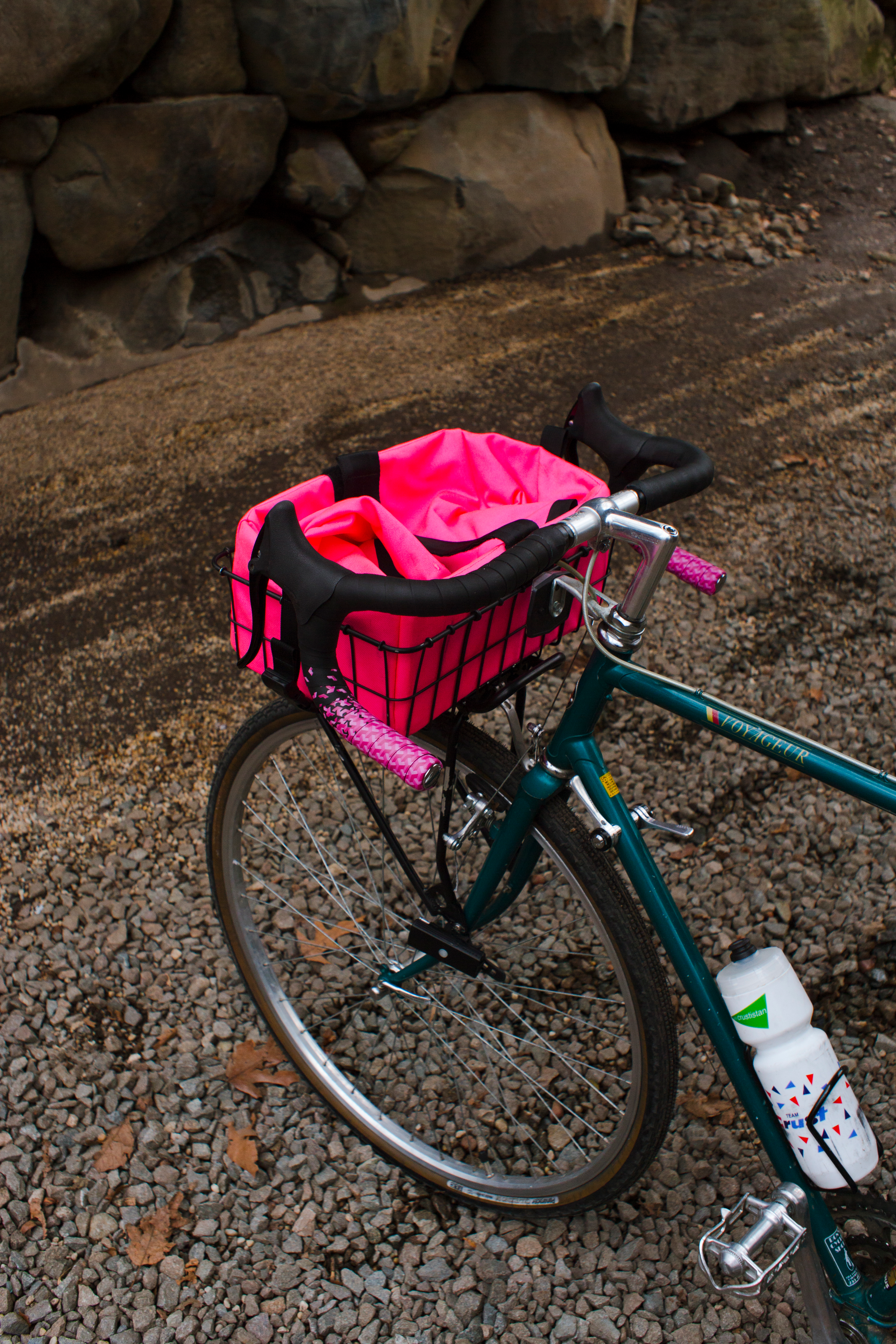I Bought A $220 Bike To Do A $1,600 Bike's Job And Everything About It Is Making Me Lose My Mind
The idea was simple: Get a cheap, old steel bike and bring it up to date with modern components, good enough to hang with modern bikes costing four figures. I should have known that simplicity was not going to feature in this process.
The bike in question is a late 1980s Schwinn Voyageur that I bargained down to $220. I found it being sold on Facebook Marketplace by a friend of the owner, happy to see it gone from their basement. The modern bike I've kind of pegged it to for aspiration is a Surly Straggler, a bike that my girlfriend rode across the country, which retails for $1,650. Both bikes are steel frames. Both bikes have lots of mounts for your stuff, and room for chunky tires. Just the kind of thing you want for, say, spending a weekend out in the woods outside of New York City, sleeping where you stop, and having fun in some dirt.
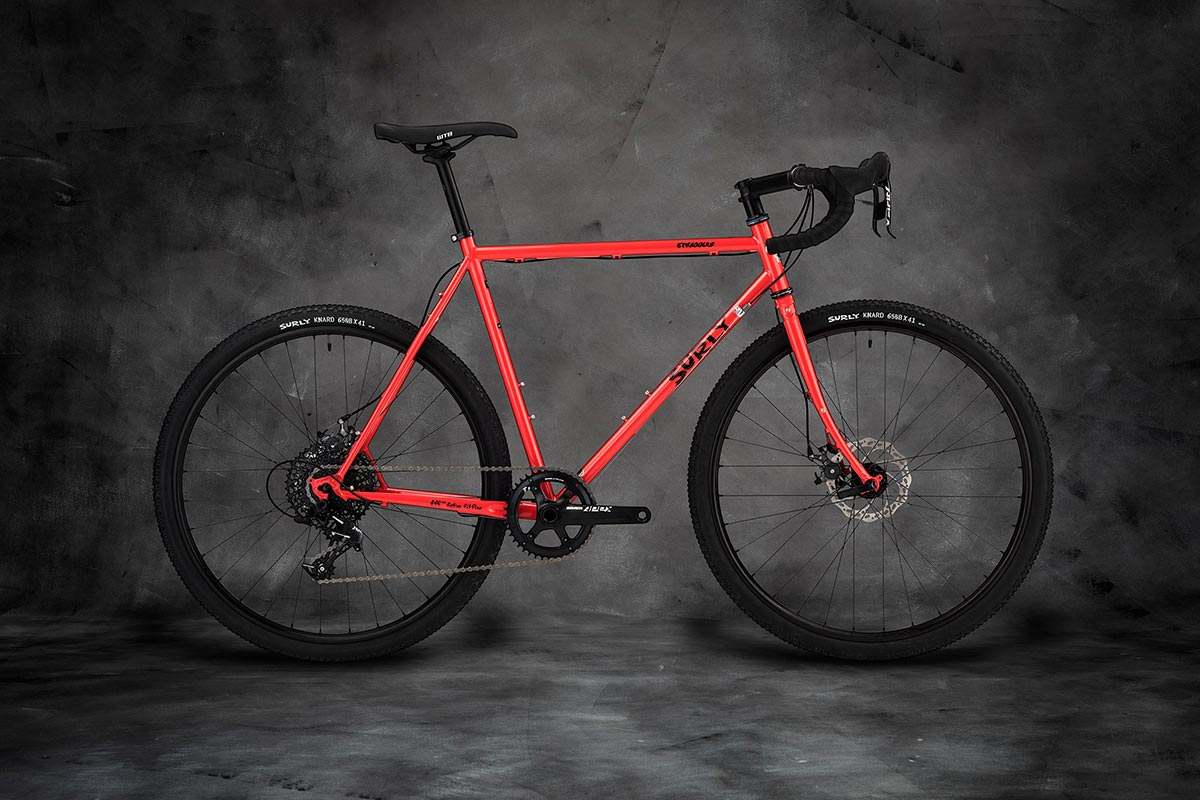
This is exactly the kind of trip a Straggler is perfect for, being able to carry a lot of weight, fit a big tire, and still ride like a quick, sporty, yet still comfy bike.
I looked at those traits and figured hey, that's just like my old Baja Bug. That's a normal car body, made to fit big chunky tires, rip around on country roads, paved or not, and sleep in if I'm out in the woods somewhere too far from home. I know how to do this kind of thing! Make old parts fit with new ones, save some cash, and learn some theory and bike maintenance along the way. I hadn't worked on a bike since I was in high school, and imagined myself breezing down forest tracks, like I was inside Instagram or something. I figured this'd be a fun project.
And indeed it has been. Also it has driven me completely bonkers. My current issue (having already driven my brain out of my ears on such issues as: modernizing the handlebars, the wheels, the tires, and the entire fit of the bike itself) is getting the brakes to work.
The brakes in question are called cantilever brakes. They're common enough that you've probably seen them and not noticed them at all. You can see how they look below, above the back tire of my bike. They're not particularly complicated in how they're set up, and mostly just look like a few wires hanging off a bike. A cantilever brake is two arms held together with what's called a straddle cable. The straddle cable gets pulled by your brake cable through a carrier. Pulling on your brake levers pulls the brake cable, which pulls the straddle cable up. Pulling the straddle cable up, in turn, pulls the brake arms together. Your brake pads are mounted on the arms and they clamp down on the rim, slowing you down. They're among the simplest mechanical systems ever, and yet somehow, something that has always appeared trivial has driven me absolutely bonkers.
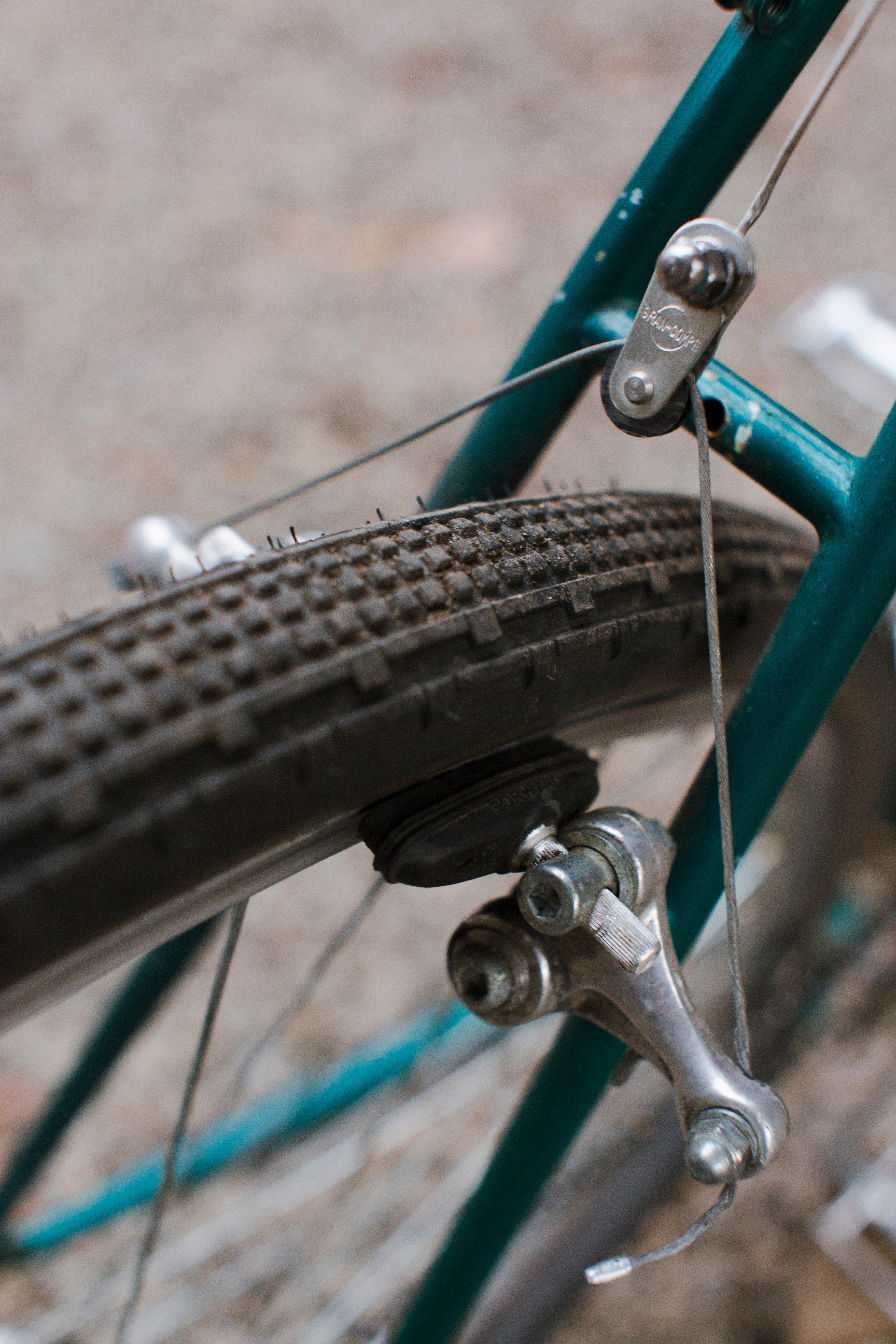
I love this old bike. It's handsome, first of all, and the frame is held together with what are called lugs (the somewhat medieval-looking fittings between tubes) instead of easier welds, as pretty much all steel bikes are now. You can see the lugs here, with all the tubes meeting into a multi-sheathed kind of metal piece.
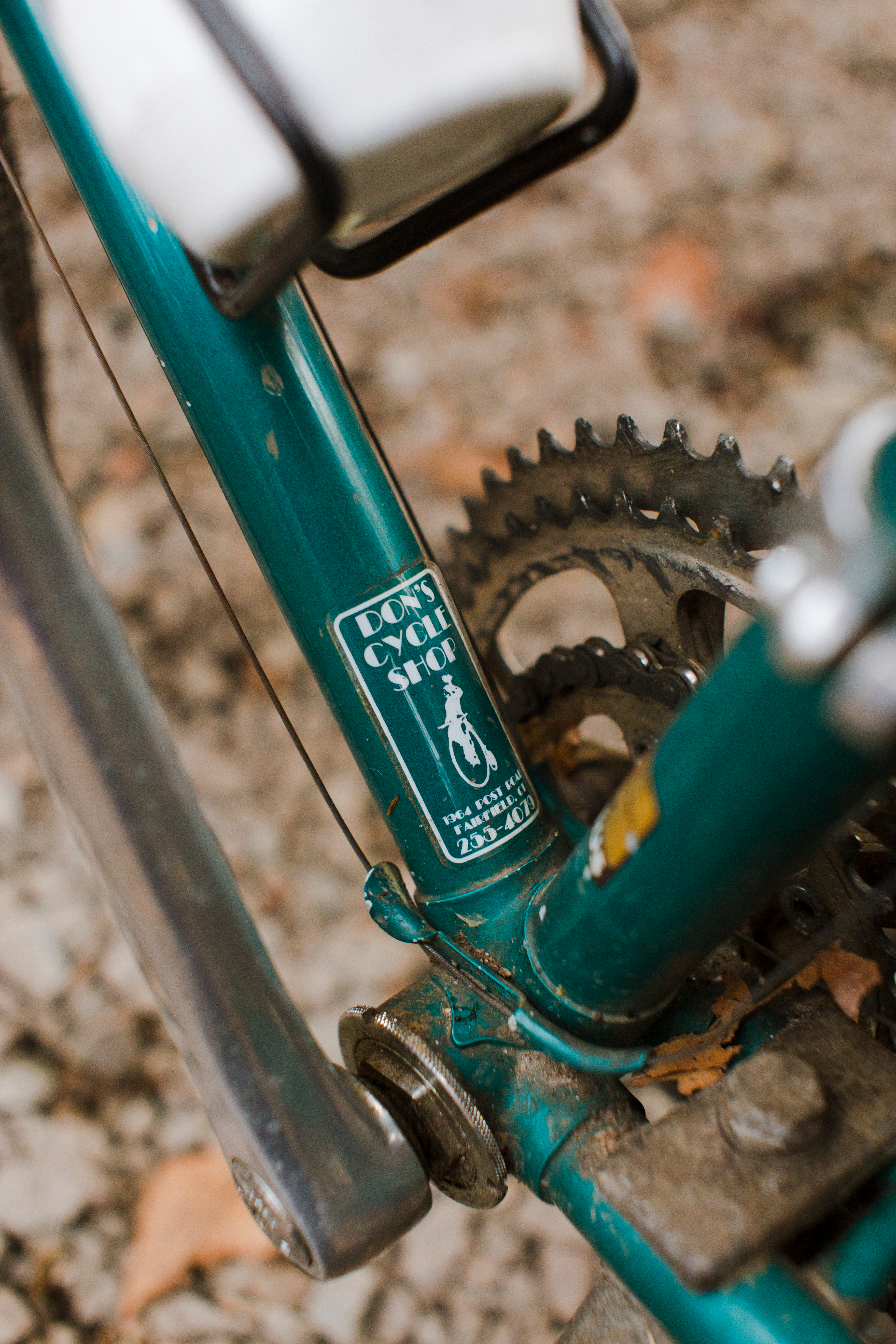
It also reminds me of my high school bike that I still have, a 1970s Schwinn Traveller III that I dragged out of a dumpster back in my hometown in California. Every time I look at it, I enjoy it, which is the kind of thing I'd say if the bike were possessed by an evil ghost that wanted to torture me.
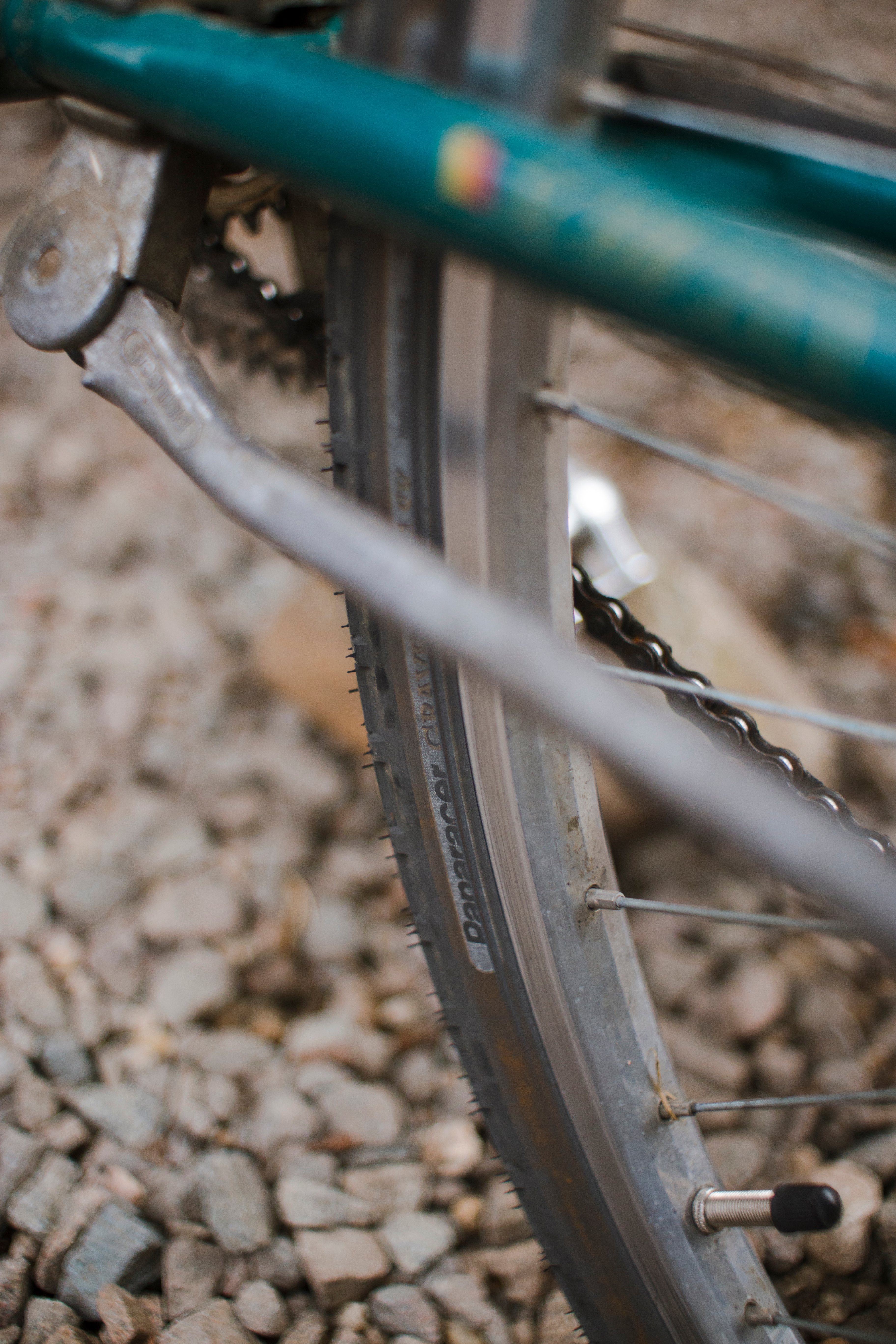
The central point of modernizing this bike stems from the wheels. My bike is old. It's either an '87, an '88, or an '89, as I've deduced from this handy chart. It came with narrow wheels that are 27" in diameter. This is an old standard, and to find nice, chunky tires, it made sense to switch to a more modern wheel size. The closest of those is 700c, which is only a few millimeters different when measured where the brakes hit the rim. The cantilever brakes on the bike have enough adjustment in them that you can get the pads to meet the rim even after the swap. I was jazzed!

The problem was even after I swapped everything over, my brakes still felt like garbage. They barely wanted to lock up the wheels, and all sorts of strange things were happening as I adjusted them. I would adjust some cables one way so that they wouldn't interfere with the mounts for my fancy bike basket and the brakes would mysteriously get worse. I would move my mounts for my basket, re-adjust my cables, and the brakes would still feel bad. Lots of trial, lots of error. I spent hours reading old bike websites on cantilever adjustment, slaving away into the night, poking blood out of my fingers on frayed cables. Most advice online said to simply ditch cantilevers altogether. Exhausted, I took the bike to my local shop and asked if they had any advice. "Honestly, I stuck with cantilevers too long," the mechanic told me. He himself used to have a bike like mine with cantilevers, encountered the same problems, tried to fix them every way he could, and ultimately switched to a more modern braking system entirely. He told me to do the same.
What I am about to explain I only know because this bike has sent me down such a rabbit hole that I was almost forced to know it.
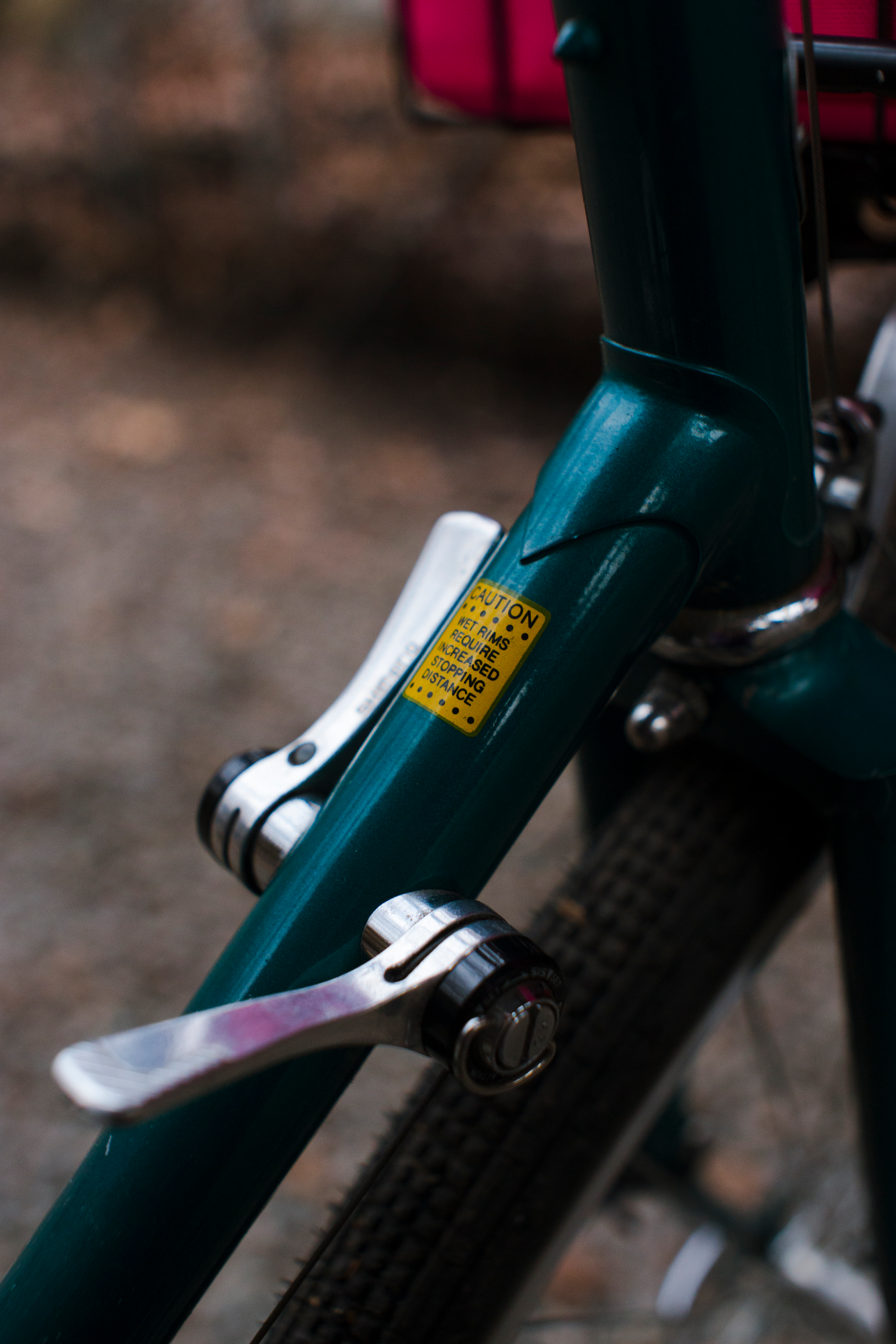
So! Cantilever brakes were once pretty common, but the way they work is highly dependent upon geometry. For example, their clamping strength changes as you pull the cable, particularly if the whole assembly is moving up and down in relation to the rest of the bike (like if say, you are on a mountain bike with suspension).
Again, cantilever brakes work by having a straddle cable pulled up by your brake cable, which in turn pulls the brake arms together against your rim. The way the straddle cable is set up changes the mechanical advantage of the brake. If the straddle cable carrier is mounted super high up and the straddle cable is at this tall skinny angle, you get poor mechanical advantage. If the cable carrier is super low down and the straddle cable is super short and flat, you get good mechanical advantage. There's a lot to do with pivot points and I only barely understood it after watching this entire video on setting up canti brakes.
But a cantilever brake's geometry isn't fixed. It's changing as it's being actuated, and if it's moving around. Now, I can't say that even I understand this entirely, all I know is from reading too much about this online and futzing with my own setup. Mostly poorly, as my brakes are far from great.
Around this time, people were trying to make a better cantilever, and all kinds of strange designs come out of this period of changeover from the old system to what was becoming the new one. There are also fun stories, as included in this Bike Magazine profile of Ben Capron, who helped make this changeover happen:
It is 1988. Ben Capron is 17 years old. He is sleeping in his broken down Volvo station wagon. In a junkyard. Surrounded by angry pitbulls. The next morning Capron's beloved car would be turned into a pile of metal scrap. This is a high point in Capron's life and a turning point in mountain biking.
At an age when most kids are busy battling acne, Capron was obsessed with improving cantilever brakes, which looked like they might stop your bike, but were essentially just seatstay ornaments. To that end, the teenager had created a more powerful cantilever brake he called the Decelerator and which he'd been trying to deliver to the editors of Mountain Bike Action, right up until his Volvo's engine threw a rod and landed him in the junkyard.
When Capron finally limped into MBA's office with his new brake, the editors were impressed. Glowing reviews followed. By the time Capron graduated from high school, he was selling 500 hundred units a month under his company, Marinovative.
What Capron and others figured out was that instead of having the brakes be pulled at the center, they could be pulled from the side, and they would not only work stronger, but safer, and they'd be compatible with suspension bikes. By the mid'-90s, big name companies had moved in, with Shimano patenting what we all generally call the "v-brake." It's not so different from what Capron was pitching in 1988.
I wanted to see if I could find an old brochure of what Marinovate was selling back when, but this is reasonably obscure stuff, and the best I could easily find was news coverage of when Shimano first started using v-brakes in 1996. The announcer still calls them cantilevers in the video.
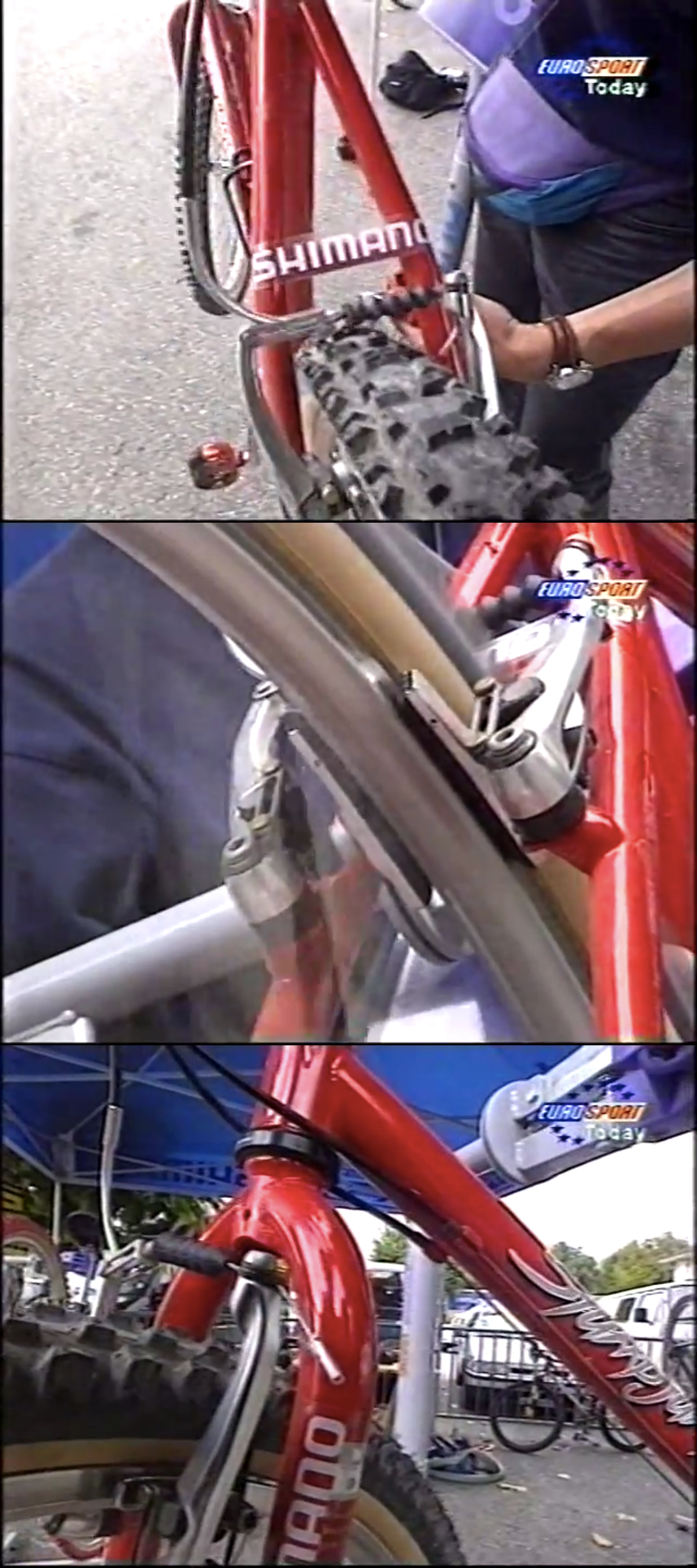
I will also add that there were all sorts of other now-obsolete other brakes in this genre, from the Dia-Compe VC900 to the WTB Speedmaster with various other Tektros and Avids in between. I only know this because I spent several nights hunting to see if I could find a nice set used to put on my bike to solve my issues of getting my brakes to clamp down and getting them to fit my modern, smaller wheels.
And the reason why I found myself spending several nights hunting for different parts was because the simplest, easiest solution eluded me.
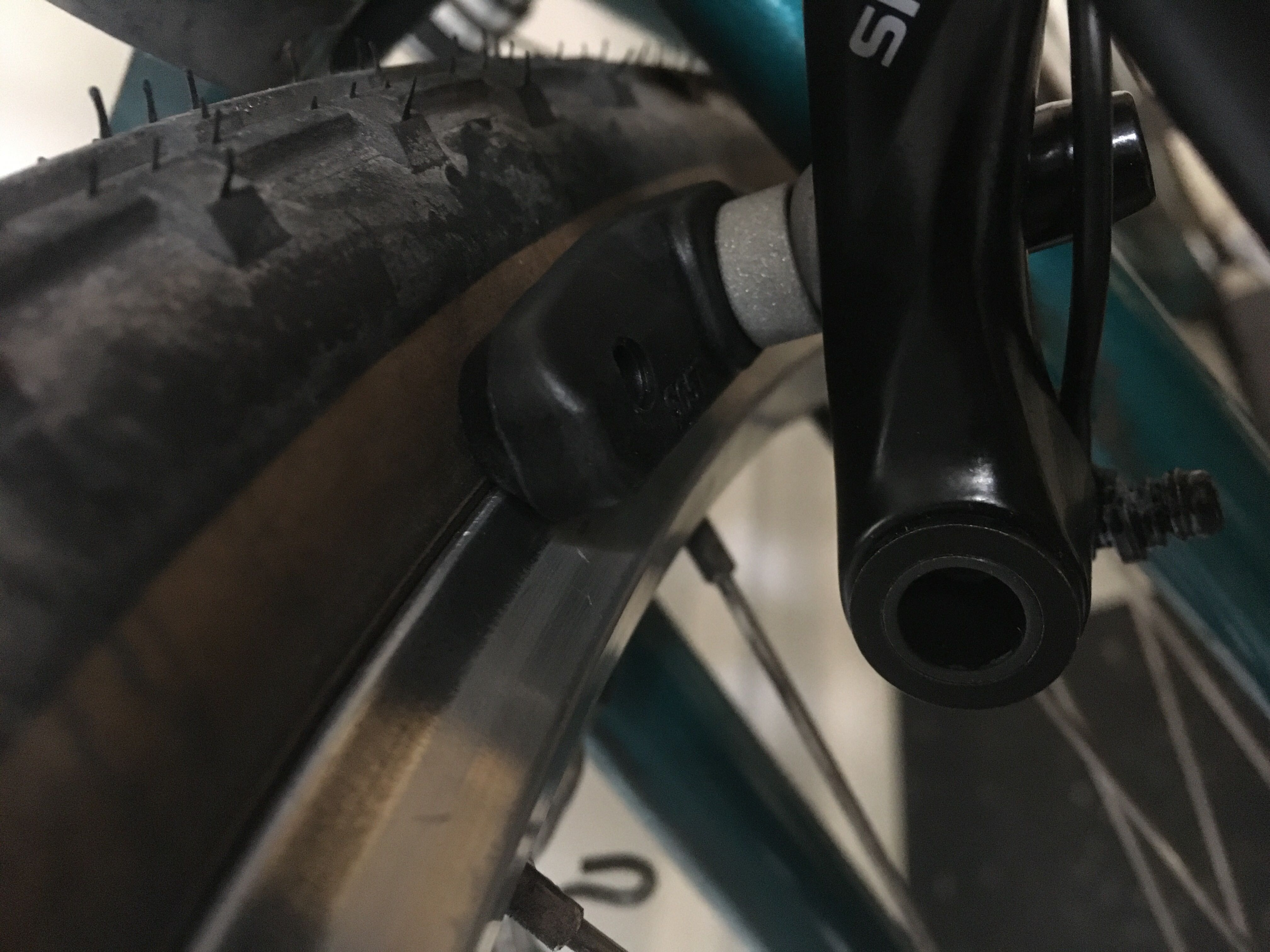
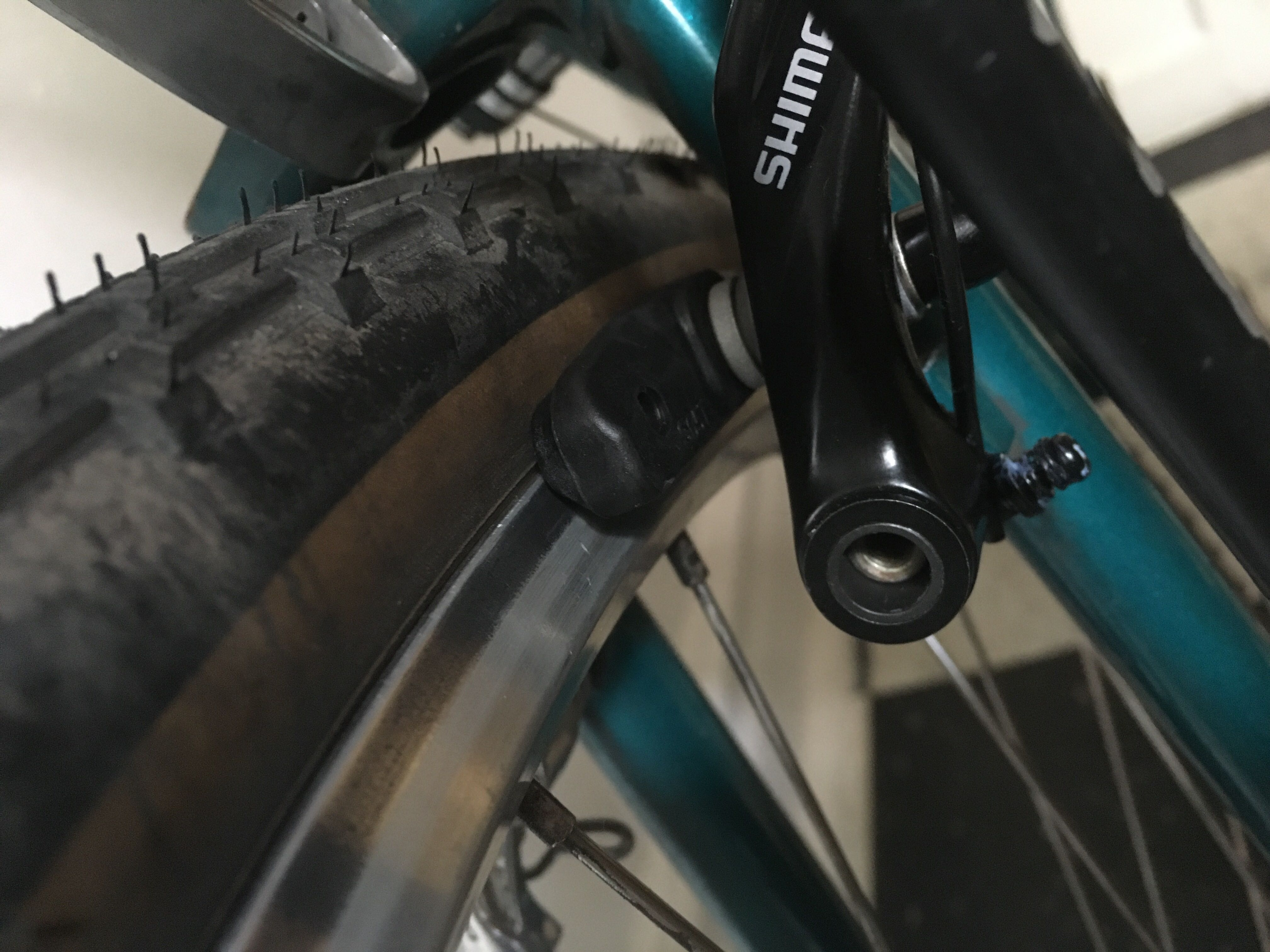
Above you can see my bike with one arm of a standard v-brake test fitted. I had finally broken down, given up on adjusting and re-adjusting cantilevers, and spent $25 on a v-brake. And it didn't fit. With the spacers on the brake pad mounted as they came out of the box (top pic) the pad didn't even touch the rim. With the spacers flipped, I was still touching the tire. If I rode like that, I'd burn a hole in the tire.
This is because of yet another change in standards since my bike was new. The brakes on my bike are mounted higher up and closer together than on new bike. That is, the physical mounting points are closer together and higher up. Modern mounting points are farther apart and lower down. That's why my new brakes were clamping in too high and too close on my old fork. Some people file out the mounting slot on these v-brakes to make them fit better, but there wasn't even enough material on these brakes for that to be an option if I was feeling reckless.
The brakes went back to the shop, and I realized I might be shit out of luck in more ways than one.
In my many trips to the shop with these brake questions, what every mechanic pointed out was that I had brake levers meant for v-brakes. That sounded great! I was going to put v-brakes on my bike. But as I realized that v-brakes weren't going to fit, I realized my new levers might have been the root of my braking problems all along.
As it turns out, the way that v-brakes are set up requires the brake cable to be pulled a longer distance all the way between the brake arms, versus the shorter distance of a cantilever brake just pulling up from the middle. V-brakes are "long pull," cantilever brakes are "short pull," as are most road bike brakes. What I had were long pull levers.
What does this mean, ultimately? Even I don't totally understand it, even after all this reading and fiddling! I think it's mostly that you need X amount of cable to really jam down on a cantilever brake, and you need more than X cable to do the same on a v-brake. But that shouldn't be a huge issue as I understand it. The main issue as I get it would be bottoming out your brake levers. That is, pulling them back so far that they hit the handlebars before they move the brake pads enough to clamp down on the rim, but that's not happening to me, and my brakes are still poor. There's more in there about geometry and mechanical advantage and the more I try and understand it the more my brain hurts.
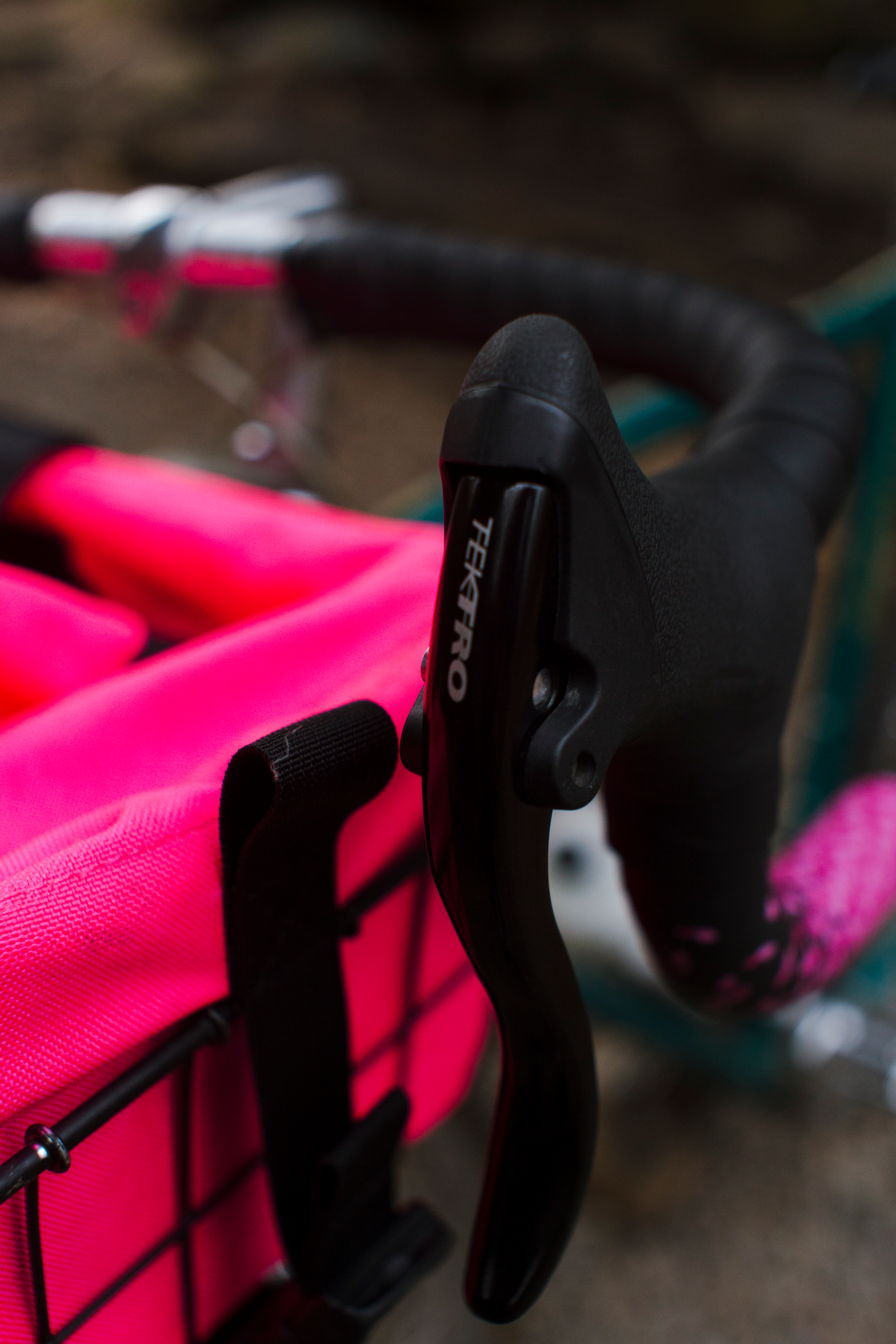
As for the brake levers themselves, I bought them because they were very comfortable, with a more modern, padded design, and they were cheap, just $15 on Craigslist in the neighborhood next to mine. They looked amazing on my new, wide, modern handlebars, with the new, modern handlebar tape that my girlfriend and I wrapped ourselves after watching precisely one YouTube video and becoming experts.

My brake levers were never going to pull the right amount of cable, were never going to have the right amount of pull for the right mechanical advantage I needed. I have v-brake levers on a bike that doesn't want to accept v-brakes. Luckily, a few options prevail.
One of the first people to produce a v-brake design was Paul Components, and he still sells it out of Chico, California. It's called the Motolite, for sale here and with a bit of history here. The nice thing about them is that, well, Paul runs an old VW Dune Buggy, also was a pioneer in making old bikes fit with more modern wheels, and these Motolites look like they have enough adjustability in them to work with my mishmash bike.
I can bite the bullet and spend over $100 for a single (!) Paul Motolite v-brake, which has enough adjustability that it looks like it'd fit for my 700c conversion. I'd be granted all the ability of more modern stopping power and I'd get to keep my brake levers.
That or I can stick with cantilevers, possibly updating to a more modern cantilever (such as the Shimano CX50), change the pads, and hope for the best.
I ended up ordering a new set of short-pull levers, otherwise identical in price and design to the ones on my bike right now. They'll be here next month thanks to me buying the cheapest set on eBay, down in Puerto Rico. I'll figure things out from there, as it turns out mini-v-brakes (another potential rabbit hole for fitment) use the same short pull levers as cantis. If I ever decide to spend a few hundred bucks on Motolites, at least I have the levers for them.
What has been fun is that there's been no manual for this. My Schwinn Voyageur isn't a particularly rare bike, especially in the genre of people making old frames work with new parts. I was sure someone on some forum would have made this all work but not quite. Forums are full of people asking for help but never any follow-ups. The one guy I know who has gone in on the same project as me has the same old brakes his bike came with and told me they're kind of a pain.
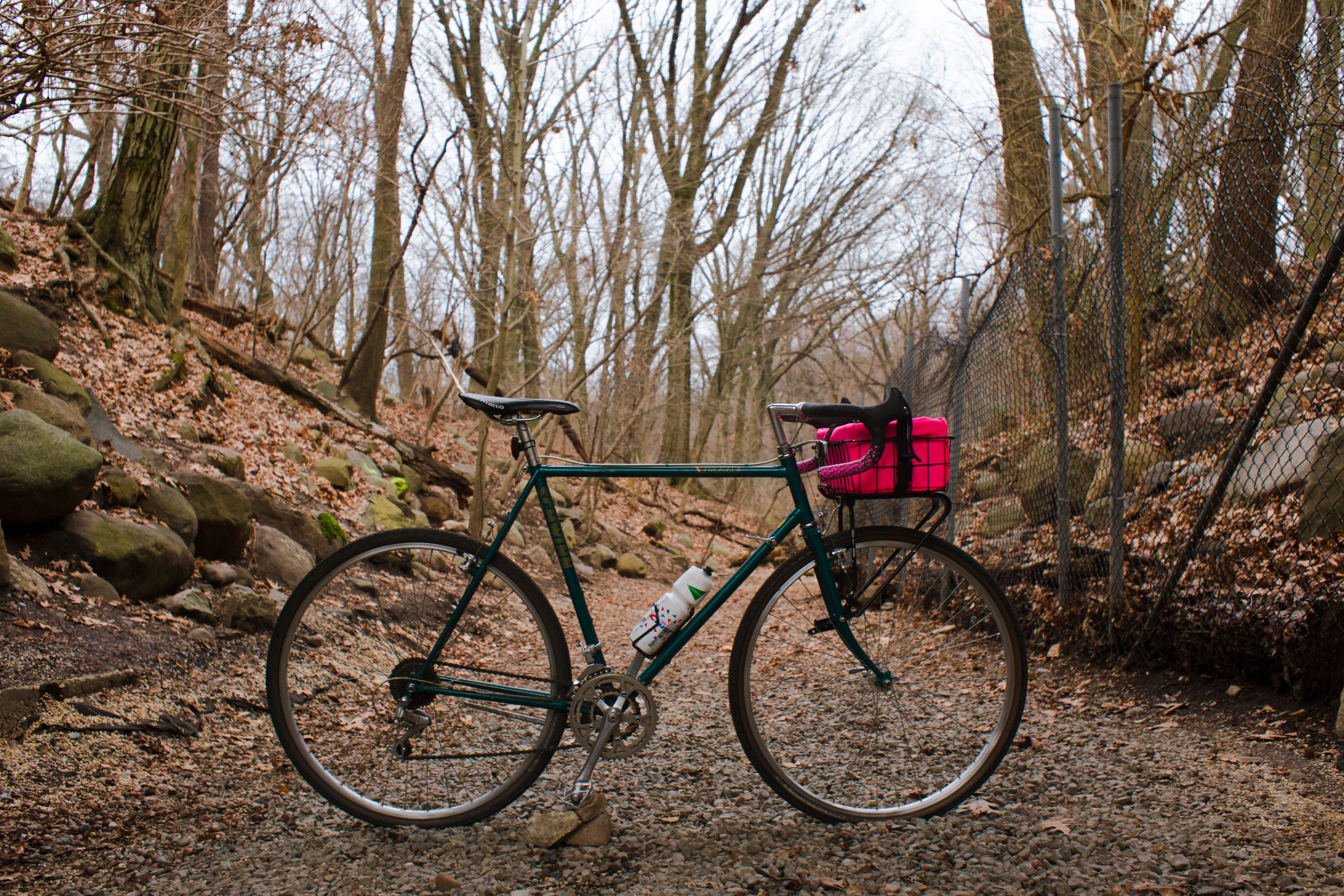
The lesson from all of this is that no matter how much I tell myself I'll have a simple project, I always, always find myself several hours into internet forums digging up information on when one format changed to another, and how I can get some low-cost, obtuse, obsolete piece of a puzzle if I just look hard enough. It's why there's a 1980s Soviet lens on my digital camera, why there are Baja racing Bilstein shocks on my stock-body Volkswagen Beetle, why everything in my life is some mix of convenient and willfully obtuse. I will never learn.

